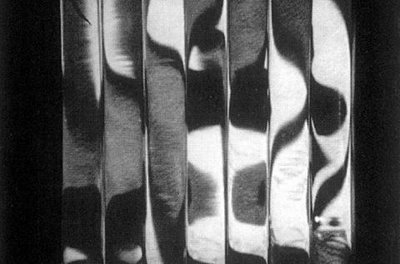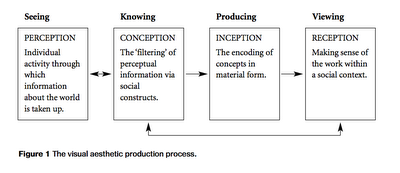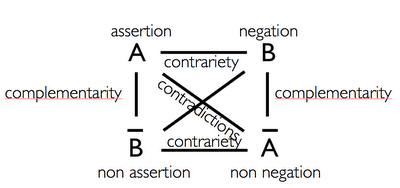If you’re new here, you may want to subscribe to my RSS feed to receive the latest Architectradure’s articles in your reader or via email. Thanks for visiting!
For the technical area of my general exams lead by Dr. Joe Paradiso, I read Gerardo Barroeta Pérez’s very inspiring thesis in which he presents S.N.A.K.E.: A dynamically reconfigurable artificial sensate skin as well as a series of related work.
The idea is to design a device that inherits the characteristics of human skin. Surveying prior work in materials, flexible electronics, sensing matrices and sensor networks, Gerardo presents a new type of artificial sensate skin: low power, scalable, mechanically flexible, and that extracts a rich set of multi modal sensor data. Also each node in SNAKE is capable of changing its behavior by changing its code. One can use SNAKE as a scalable smart material that covers interactive surfaces!
This Skin is composed of one or many Skin Patches which in turn are composed of one or many Skin Nodes. Each node is able to measure Strain, Pressure, Ambient Light, Pressure, Sound and Mechano-reception. Each Skin Patch can either work as a stand-alone device or as a data extraction device if this is attached to a Personal Computer through a different type of device referred to as Brains. Each Skin Node and therefore each Skin Patch: is Dynamically Adaptable meaning that they can adapt to external stimuli by either modifying their behavior or by completely changing their code. Construction of a sensate skin in such a modular fashion promises intrinsic scalability, where peer-to-peer connections between neighbors can reduce local data, which can then be sent to the brain by the high-speed common backbone.

Paradiso observed two general trends in sensor networks: Either the individual sensors are routed to a central processing unit or as completely decentralized sensor networks. So in SNAKE, data can be processed locally because each node is given processing power. Each node can also be connected to each other to create a skin like surface to react to the same kinds of stimuli that our skin encounters. The idea of a communication link between nodes is inspired by how our cells communicate with one another. When stimulated they generate an electrical pulse, informing our brain, while also releasing neurochemical transmitters received by neighboring cells.
Each skin patch in SNAKE is a sensor network composed by sensor nodes. Each node is made of a multi layer, flexible circuit substrate that sense six physical quantities: Stain/Bending by using two orthogonal custom made strain gages. Proximity/Activity by using a piezoelectric cantilever. Absolute pressure by using a quantum-tunneling effect material. Ambient light by adding an integrated sensor. Audio by adding a MEMS microphone. Temperature by using an integrated temperature sensor.
Related work in the field
Paintable Computer designed by William Butera for his PhD thesis at MIT. Paintable Computing is: “An agglomerate of numerous, finely dispersed, ultra miniaturized computing particles; each positioned randomly, running asynchronously and communicating locally -Butera”.
Tribble designed by Josh Lifton is a tactile reactive interface built by linked elements assembled in a sphere made up of tiles. The advantage of this work is to be a completely decentralized network; each node is capable of processing its own generated data without the need of a centralized processing unit. The cons is probably its shape, fixed, preventing it of being a scalable smart surface. Also it is power hungry!


Tribble
Pushpin Computing
The project developed by Josh Lifton & Michael Broxton consists of a hundred of peer-to-peer wireless sensor nodes freely distributed over a table-top interface.

Pushpin
Recreating the sense of touch have been explored by many other researchers, but all of them rely on a centralized processing unit to process the data extracted from the sensors. For instance, Lumelsky’s sensitive skin, a prototype of a skin patch with infrared lights and receivers used as proximity sensors. Hakozaki created a flexible robot skin to cover wide robot surfaces. Rekimoto presents a capacitive “smart skin” sensor for use in interactive surfaces.
Also prior work as shown artificial sensate skins not implemented as sensor networks but as sensor matrices: each sensor must be individually routed to a central processing unit. This is the case for instance for Takao Someya and his large flexible sensor matrix with organic field effect transistors or for M. Sergio’s textile-based capacitive sensor array that can be used as sensitive skin.

Takao Someya’ sensor matrix
An artificial sensate skin needs to be flexible. The innovative work of Stephanie Lacour is probably the most prominent example. She has created a new conducting material that can be stretched and still retain their electronic properties this by depositing thin gold layers on elastic rubber substrates. Also one can refer to the work done on the e-paper by Jacobson, micro capsules, filled with electronically loaded white parts that were dissolved in a dark colored oil.
-> Link <- to the .pdf of Pérez thesis.
 Posted by Cati Vaucelle @ Architectradure
Posted by Cati Vaucelle @ Architectradure
Technorati Tags: electronics, PhD, MIT, research, textile, technology, interaction design, robotic














